Reflections on a Simple Life
During our stay at the Stand Family Farm, we had to adjust from living with all the comforts of the modern home to living a simpler, more rustic life. It was a new experience in many ways, and while we had some hiccups along the way, we quickly grew to love our life at the Stand’s “WWOOF Camp”.
One of the biggest changes we had to make was in cooking and eating. We were used to cooking healthy meals from scratch from our past experiences at other farms, however, we had always had access to a full kitchen with a stocked pantry, refrigerator, freezer, and spice rack available to us. In the small camper we shared with the other WWOOFers, however, we were limited to a three-burner cook stove, a tiny sink, and almost no counter space. Our spices were limited to salt, pepper, and a garlic salt grinder; and our pantry contained some cooking oils and basic dry goods, including rice, pasta, lentils, beans, and quinoa. Every week we shopped for other groceries at a place called the Grange, which serves as a community center for rural towns in Oregon. The Grange opens its basement two days a week to sell groceries that are near or just past their expiration date, for the price of $10 for two full reusable shopping bags, which you bring in yourself. Very often, these groceries come from high-end grocery stores such as Albertson’s, Whole Foods, and New Seasons, and most of the products available are organic. Because of the short shelf-life of the foods at the Grange, we always opted to fill our bags with fresh vegetables, fruits, and bread, with the occasional special ingredient thrown in, such as tortillas, feta cheese, pre-cooked bacon, or soy chorizo. We always froze the bread because it would grow mold quickly otherwise, and we occasionally had to compost vegetables or fruit that spoiled before we could use it. However, for the most part, the food we got from the Grange was delicious and stayed good for the week that we needed it. And because the selection of foods at the Grange was limited, Janette and Susan at the farm were always happy to get us any ingredients we couldn’t find there, such as butter, cheese, and coffee. Our favorite thing about getting food from the Grange was that we were eating food that would otherwise have been thrown out, thus reducing our impact on the global problem of food waste. It felt so good to be eating healthy food that was saved from the landfill!
It probably sounds like we had to make due with very little while we were at the Stand, but really, having so little meant that we became very creative in our cooking, and we became very good at making delicious, wholesome meals that never left us hungry. Most of our meals consisted of a grain or pasta and a lot of vegetables, seasoned with garlic, onion, salt and pepper, but as it turns out, you can do a lot of creative meals with those simple ingredients. We made lots of soups and stir fry, quesadillas, omelets, and even veggie burgers, and not once did a meal come out anything less than delicious. Janette and Susan often reminded us that we could get more ingredients or seasonings in their kitchen at the house, but we rarely did, because we truly enjoyed the creativity of making new meals with a limited amount of ingredients. There was a freedom in the simplicity of our meals that we could taste, and we savored every bite!
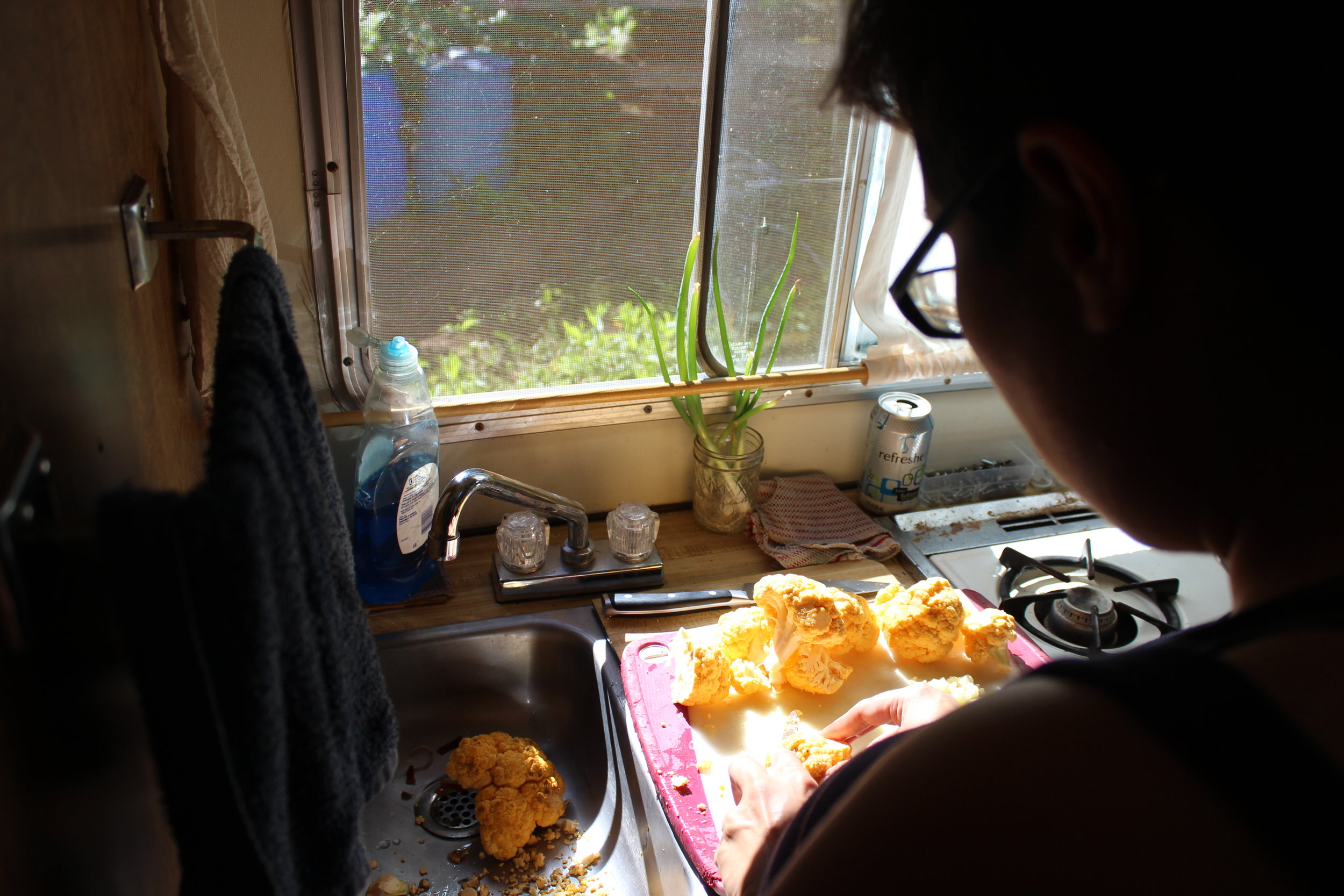
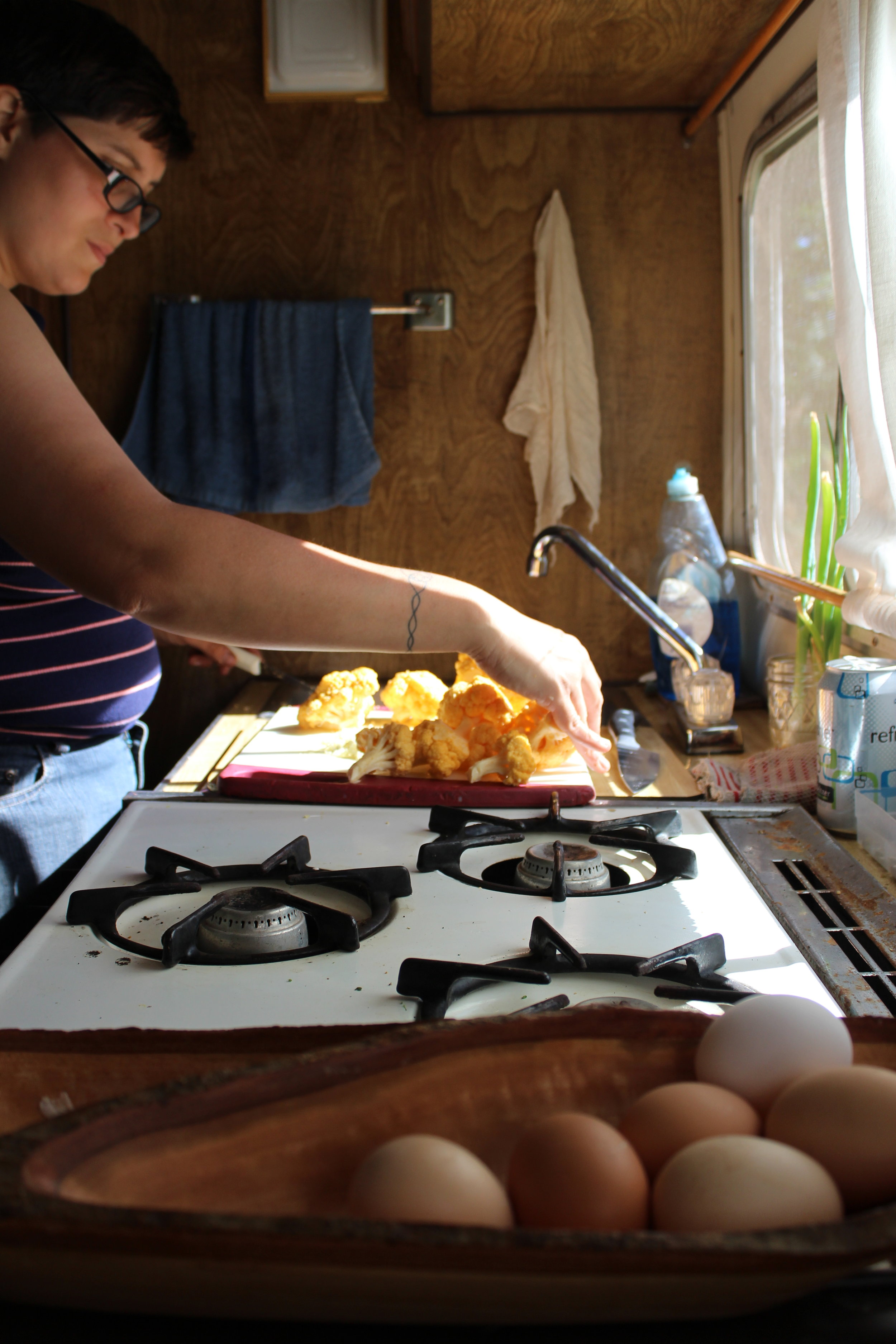


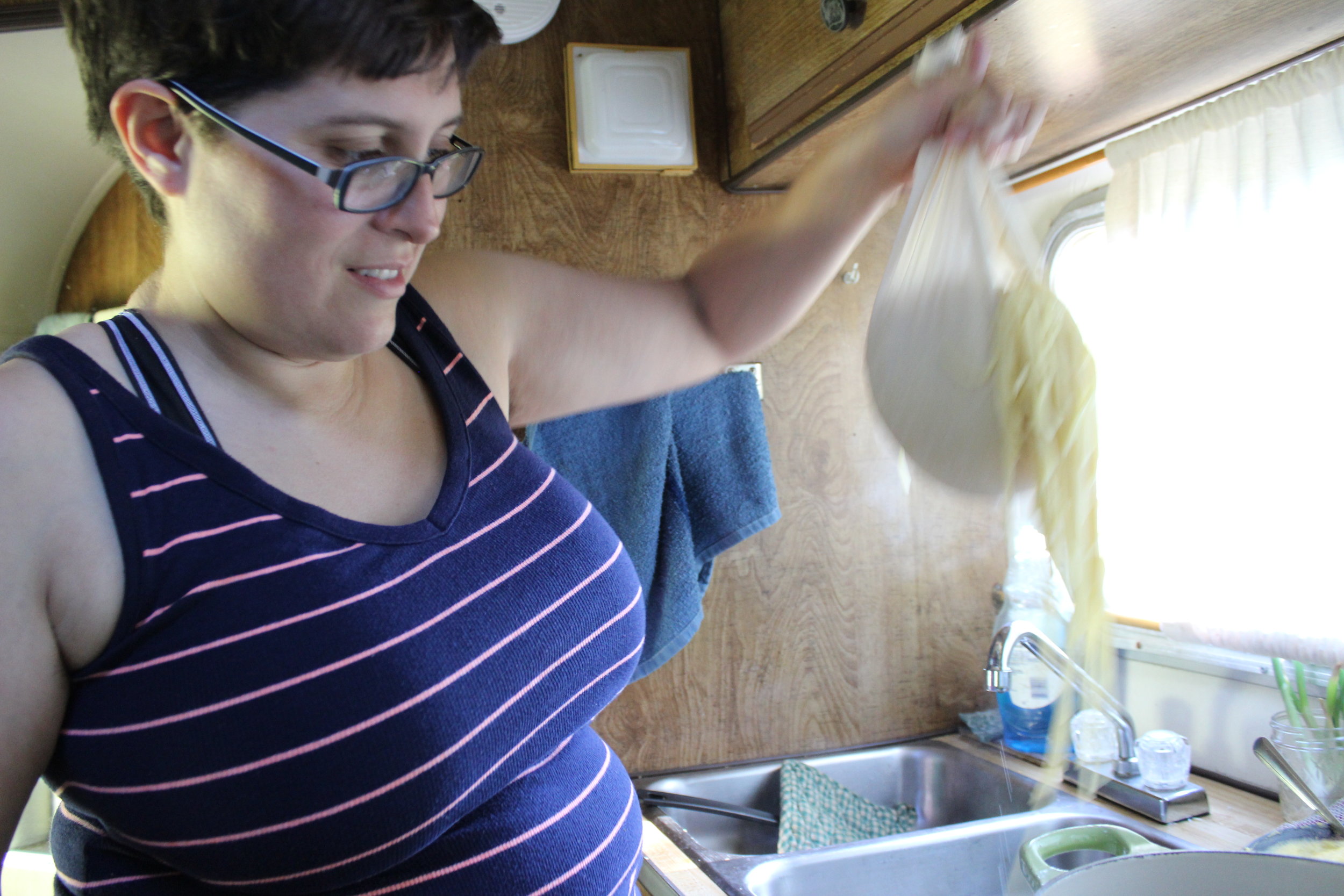
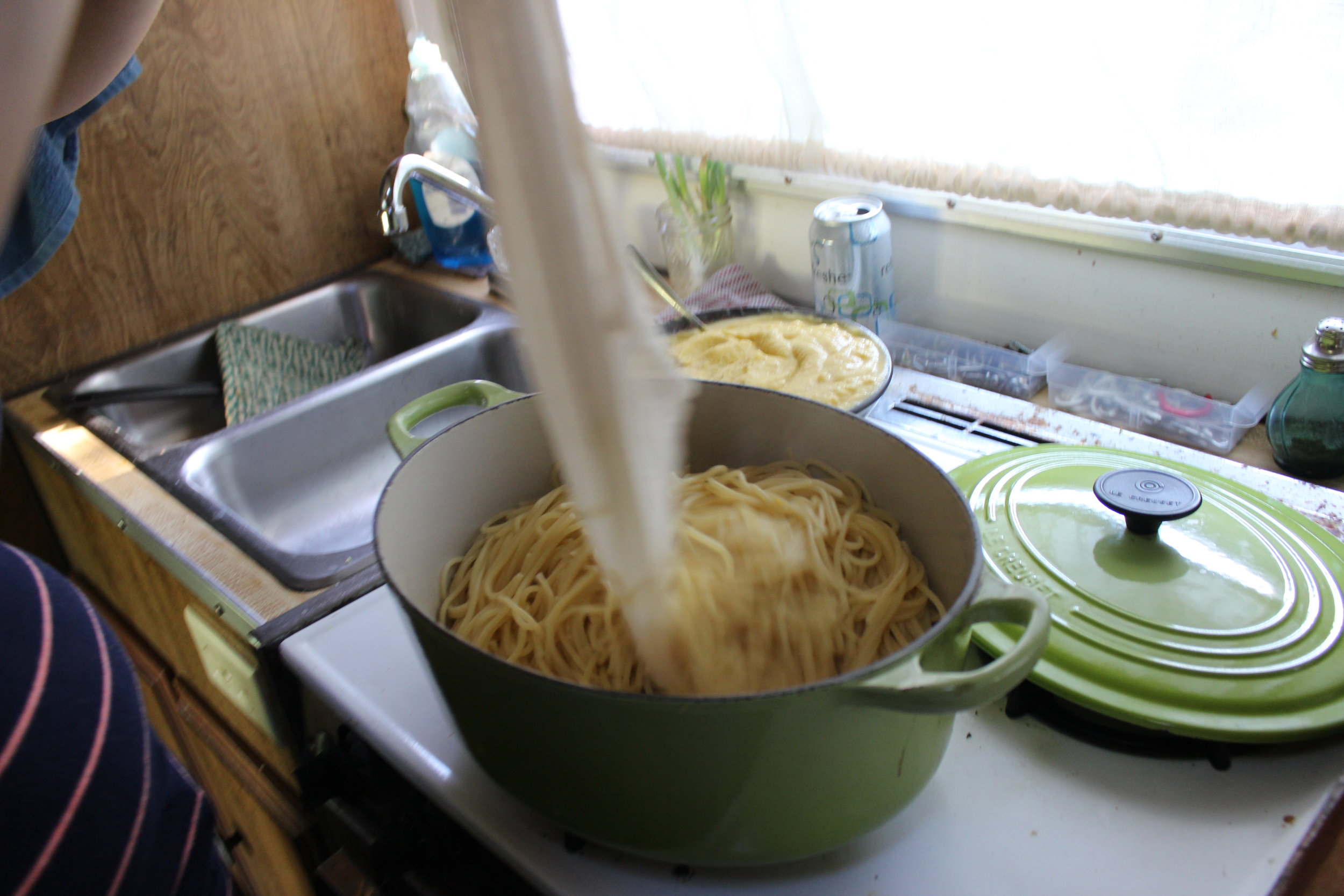
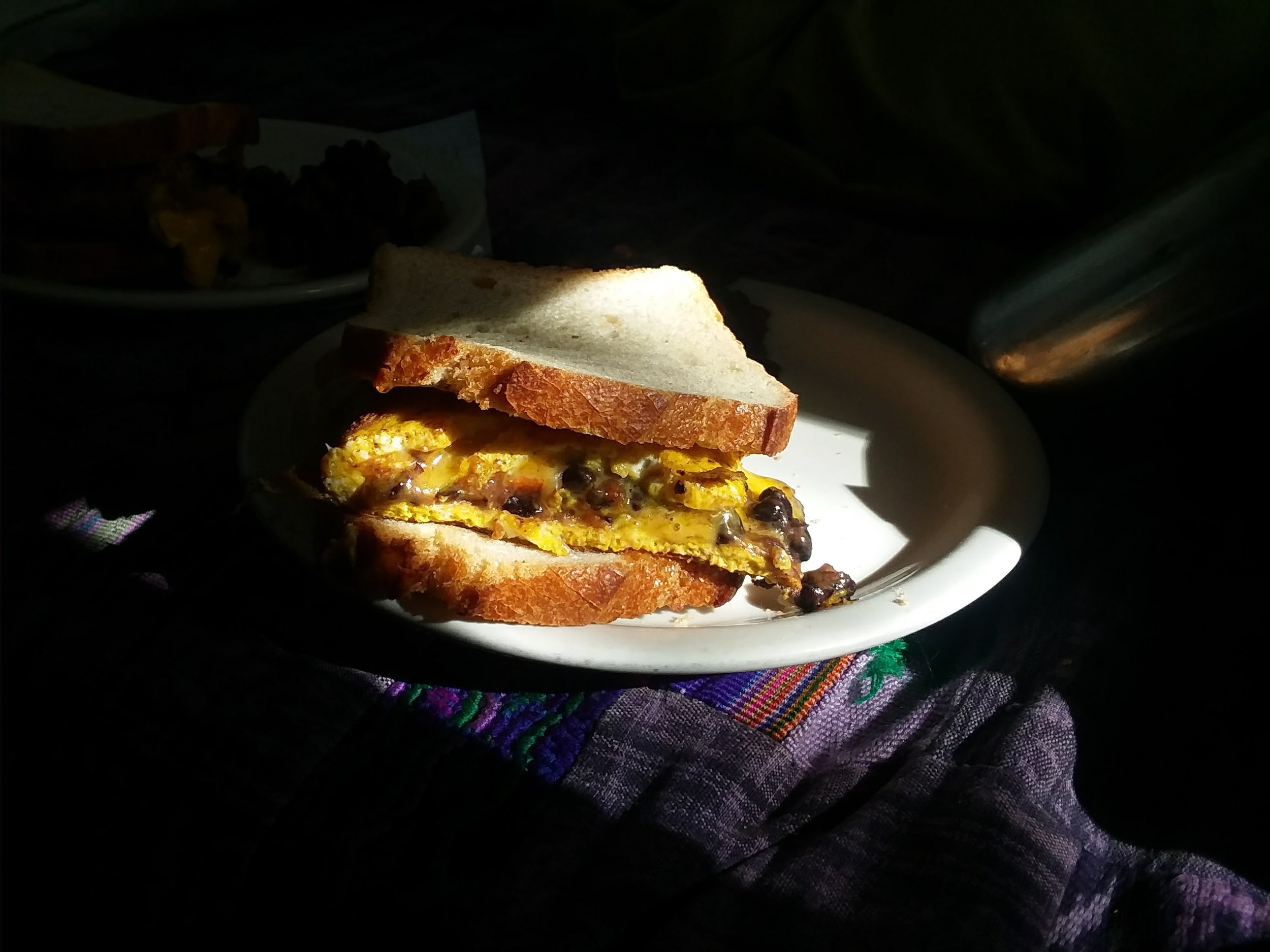
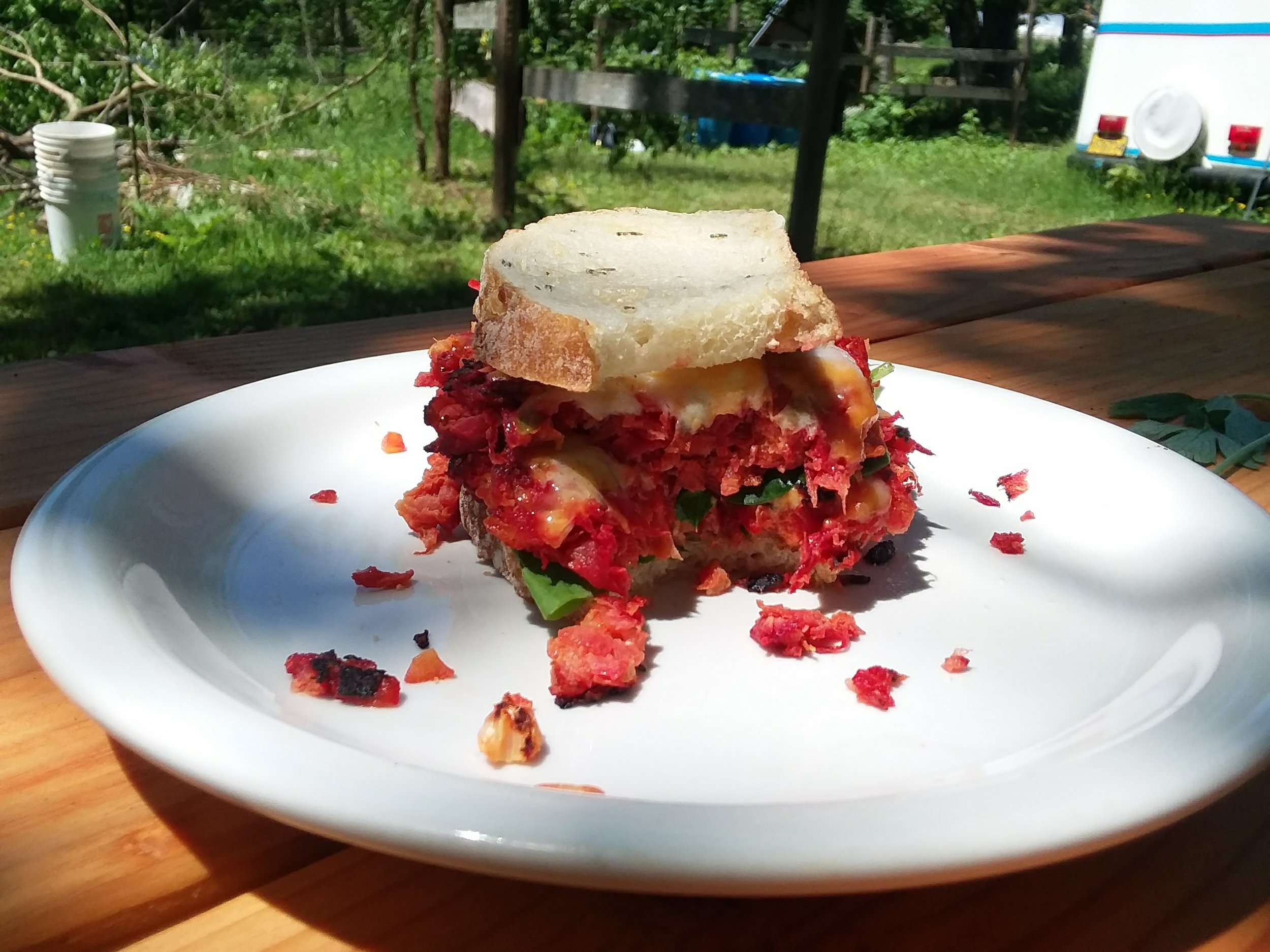
Another adjustment we had to make was living without very much internet access. There was a good internet connection in the big house, but we didn’t spend a lot of time there. Down at the WWOOF Camp, we could sometimes get a connection from the house, but it was very limited and more often than not, we couldn’t open even one webpage. Sometimes we hung out on the porch behind the house to use the internet, but soon after our last blog post, we drifted away from using the internet, and began to enjoy our time away from screens more and more. As we spent less time perusing Facebook and watching shows on Netflix, we began to read more, talk more, and just sit and enjoy the nature that surrounded us. We found that we had more time for cooking meals from scratch, slowly cleaning up after every meal, and hanging out with Janette, Susan and their son, as well as the farm manager, Charlie, and our fellow WWOOFers. Life seemed to move at a slower pace, and with so much time on our hands, we quickly found ourselves picking up an independent project on the farm: building an outdoor shower and outhouse.
We decided to start our project due to another limitation we had in the camp: the very small camper shower, which Mitch could hardly fit into, and the composting toilet, which shared its space with the camper shower. We had never used a composting toilet before, and while it is quite simple, it does take getting used to. Basically, a composting toilet is a box that is built around a standard 5-gallon bucket, topped with a normal toilet seat, which you use for your - ahem - solid waste. After “making a deposit,” as we liked to put it, you cover your waste and used toilet paper with a generous amount of fresh sawdust, which will absorb the slight amount of moisture from the waste, keep smells to a minimum, and after the bucket is emptied into a larger composting bin, help the waste decompose into usable “humanure” compost after about two years. We learned that we could also put our liquid waste into the toilet, however, we would have had use a lot more sawdust to absorb it, as liquid waste will create ammonia, which is the smelliest part of our waste. To avoid that, we opted to deposit our liquid waste along the bushes around the camp, because the Earth loves our liquid nitrogen! We quickly got used to using the composting toilet and the bushes for our daily deposits, but unfortunately, the tight space and small window for ventilation meant that the slight smell that the composting toilet produced could quickly fill the camper on sunny afternoons, which was tolerable but not pleasant. Our solution to the problem of the small shower and toilet smell was to design a combination outdoor solar shower and outhouse. We showed our design to Janette, who is in charge of infrastructure projects at the farm and she loved it, so we quickly got to work, hoping to make it a reality before we left the farm three weeks later.
The first thing we had to do for the shower was dig a trench to bring a water line from Charlie’s A-frame house, which was near camp, to the area where the shower would be built. It took us about two days, but we finished the 110-foot long trench, and soon after began clearing the shower area of sod to make space for weed barrier and a gravel base. The next step was digging the post holes for the posts that would hold up the shower/outhouse structure and roof. We then switched gears, laying the water line and burying it before heavy rains could wash away and compact the soil we had dug out and needed to use to fill the trench. After two days of rain, we were able to start work again, setting the posts with gravel after leveling and plumbing them in place, and cementing in the center post, which was a beautiful natural tree trunk that Janette had cut from a fallen tree on the property. Unfortunately, we had to leave the farm before we could finish the project, but we hope to visit the farm again before leaving Portland later this summer, and if the shower is done, perhaps we can take a shower with a view of Mt. Hood!
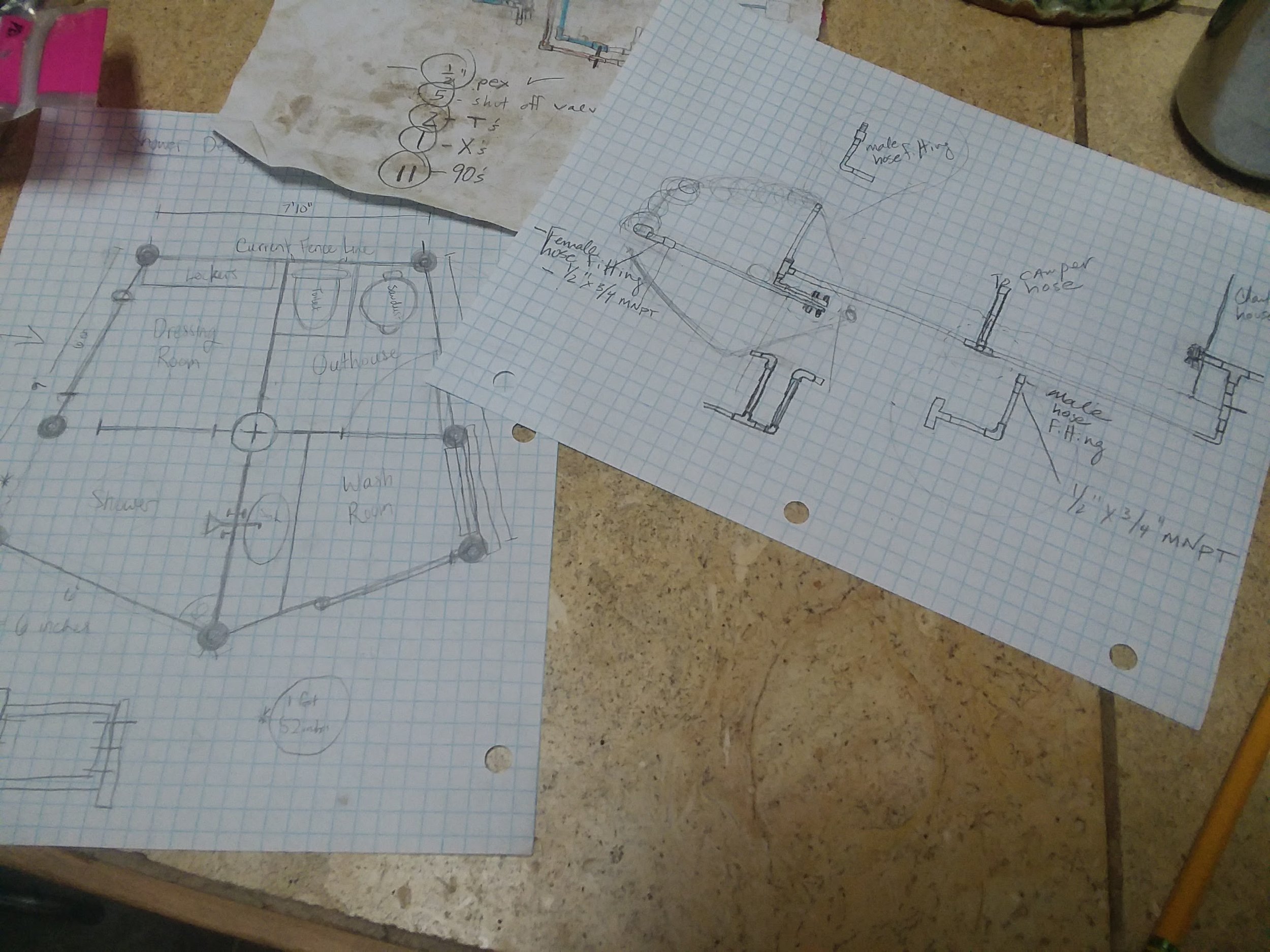
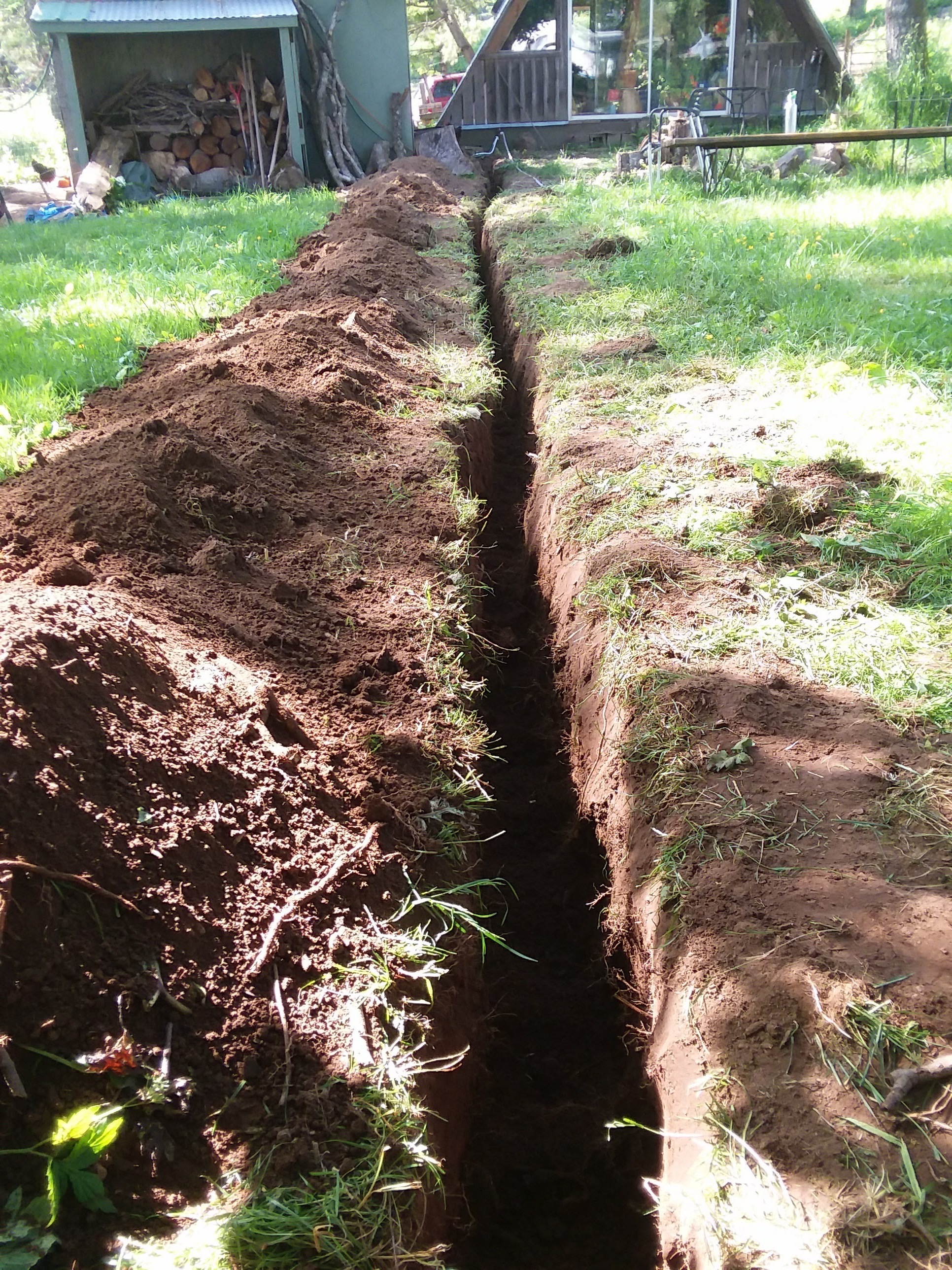
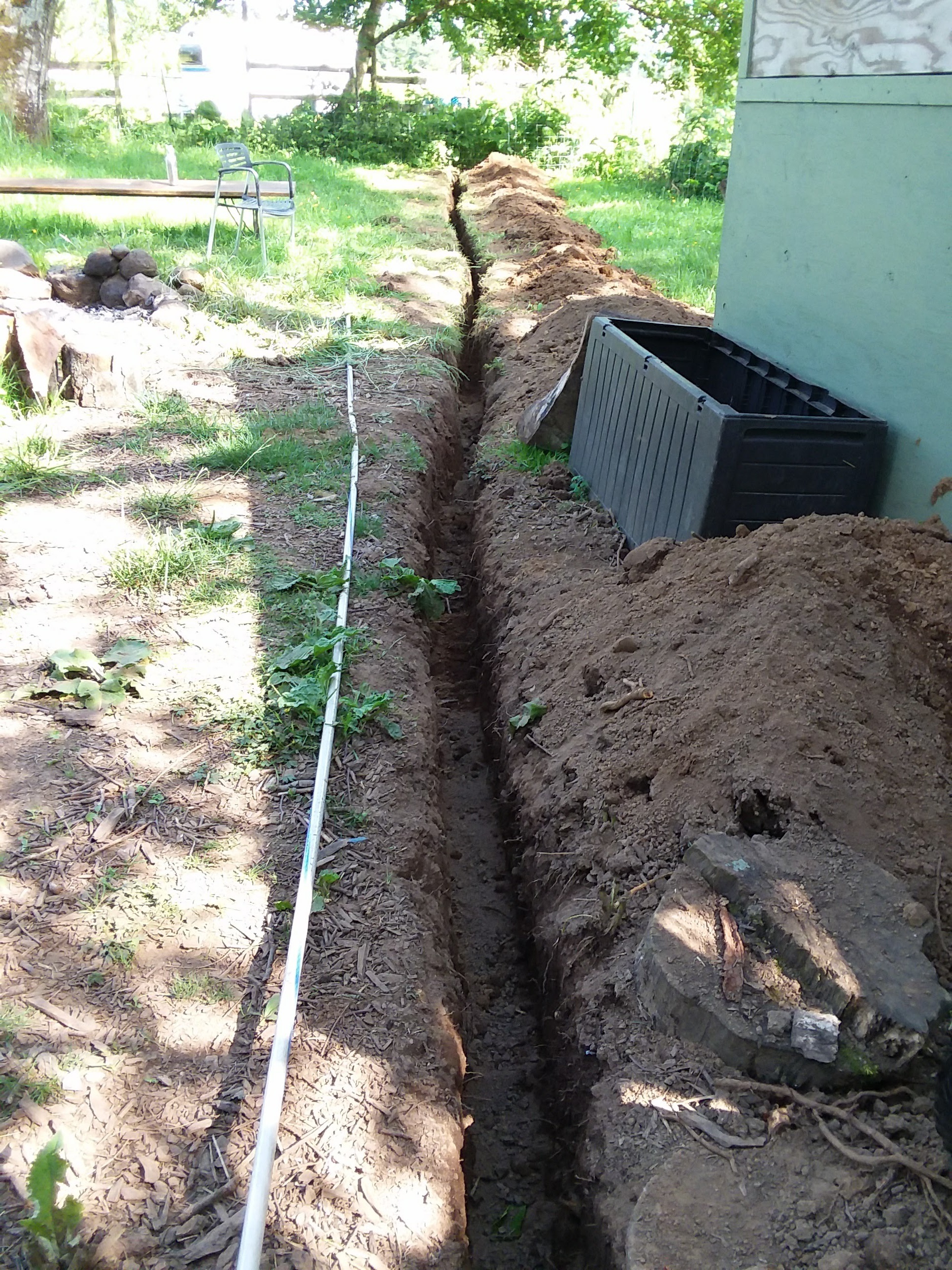
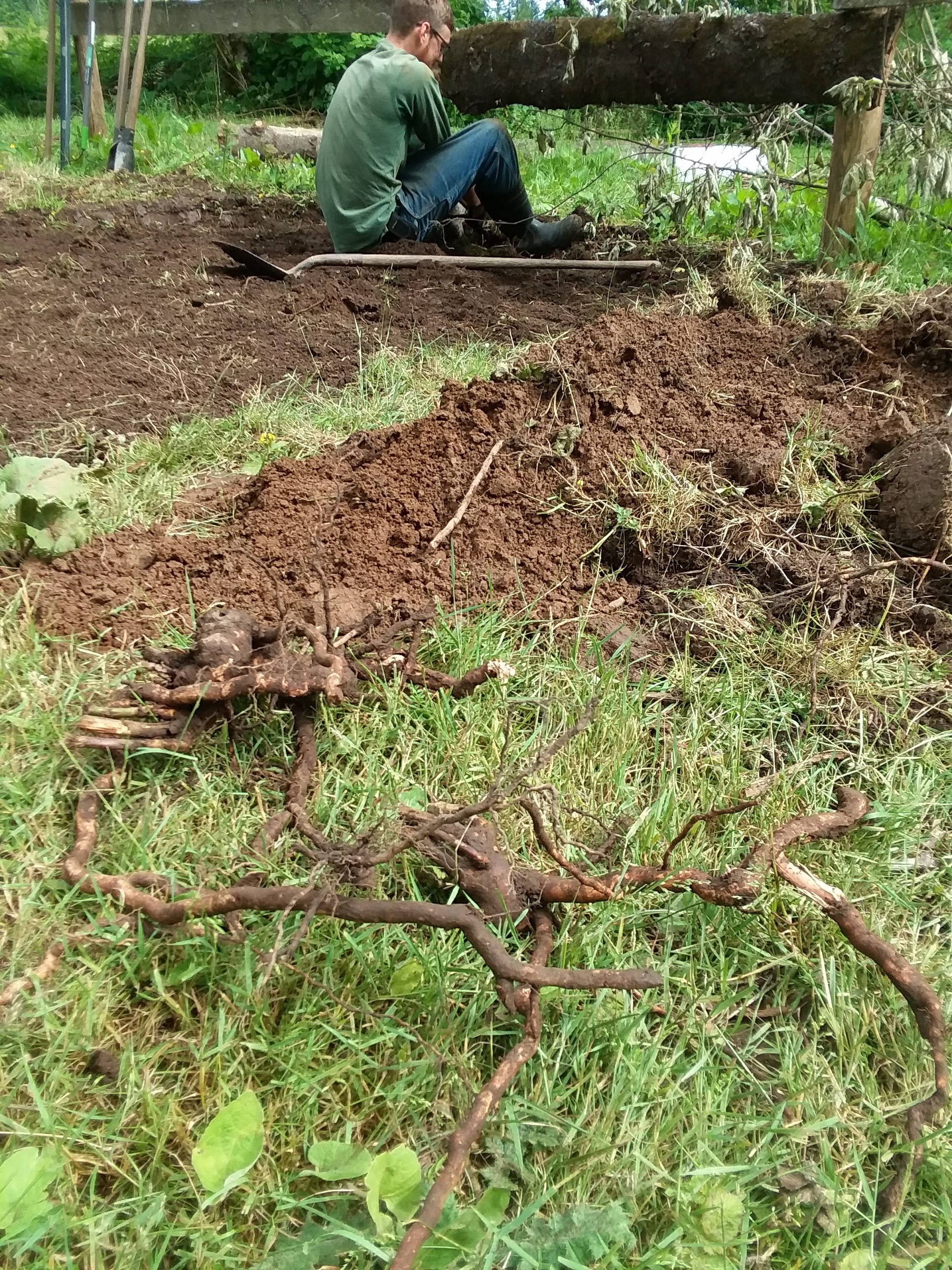
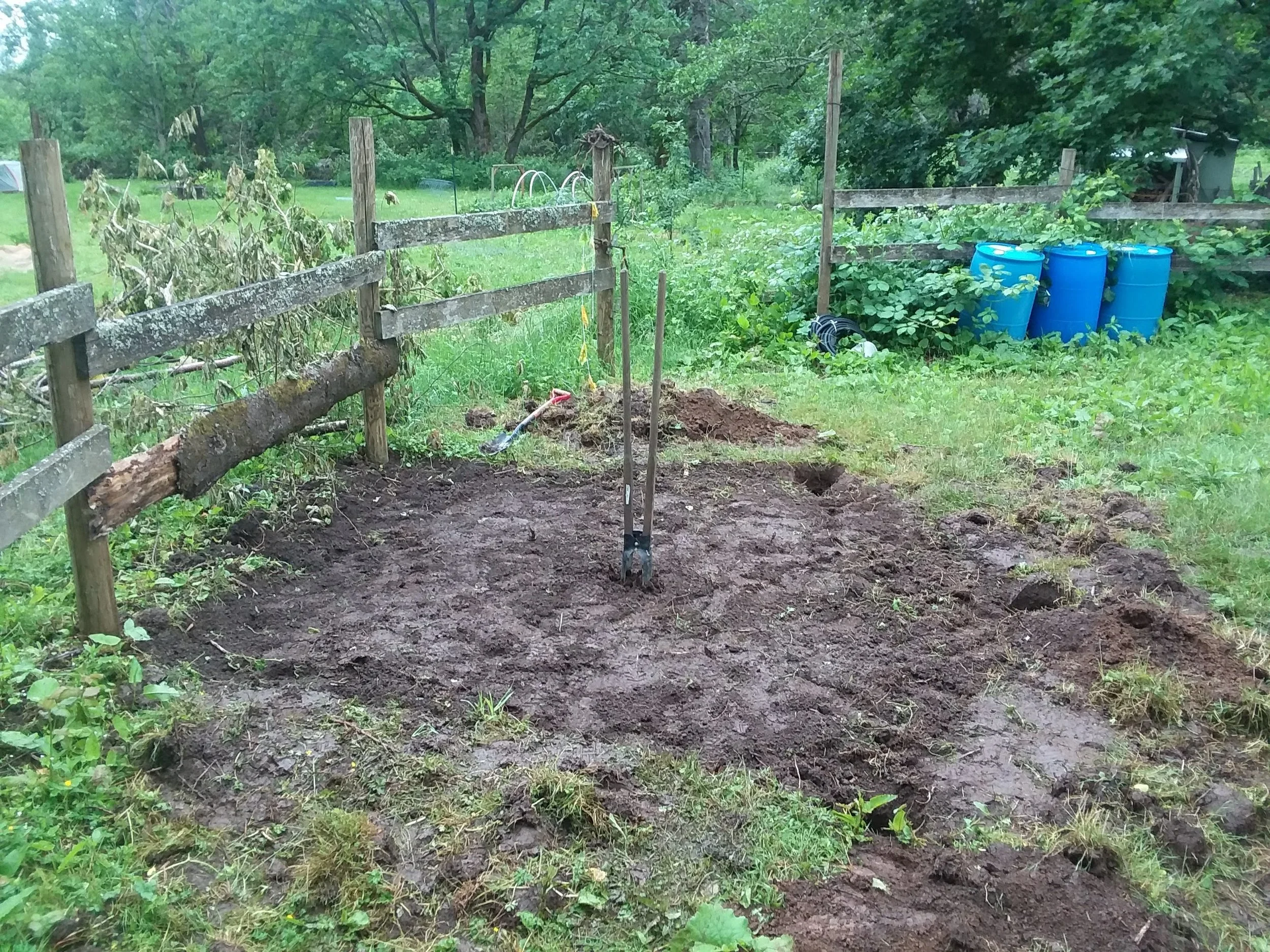

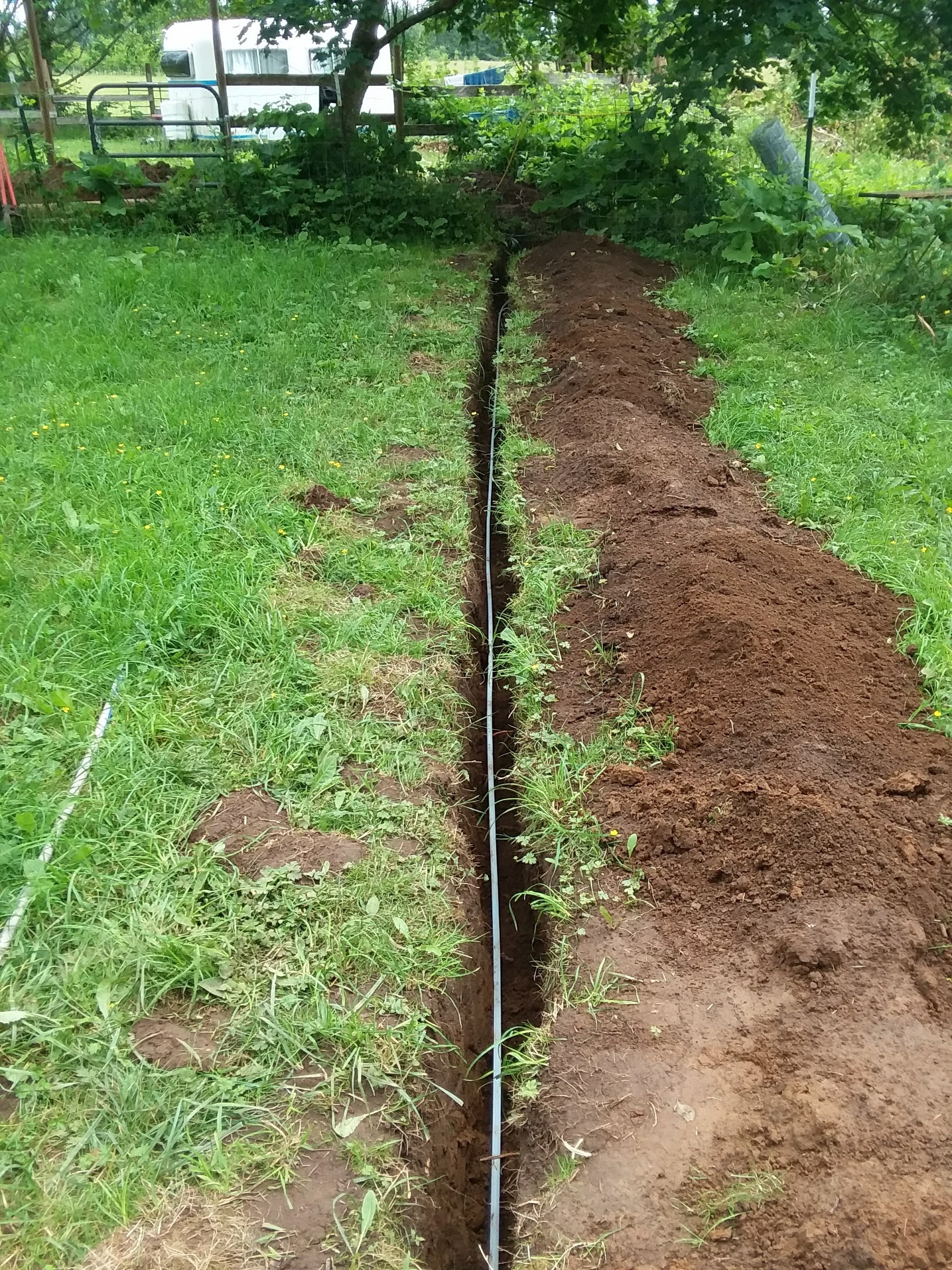
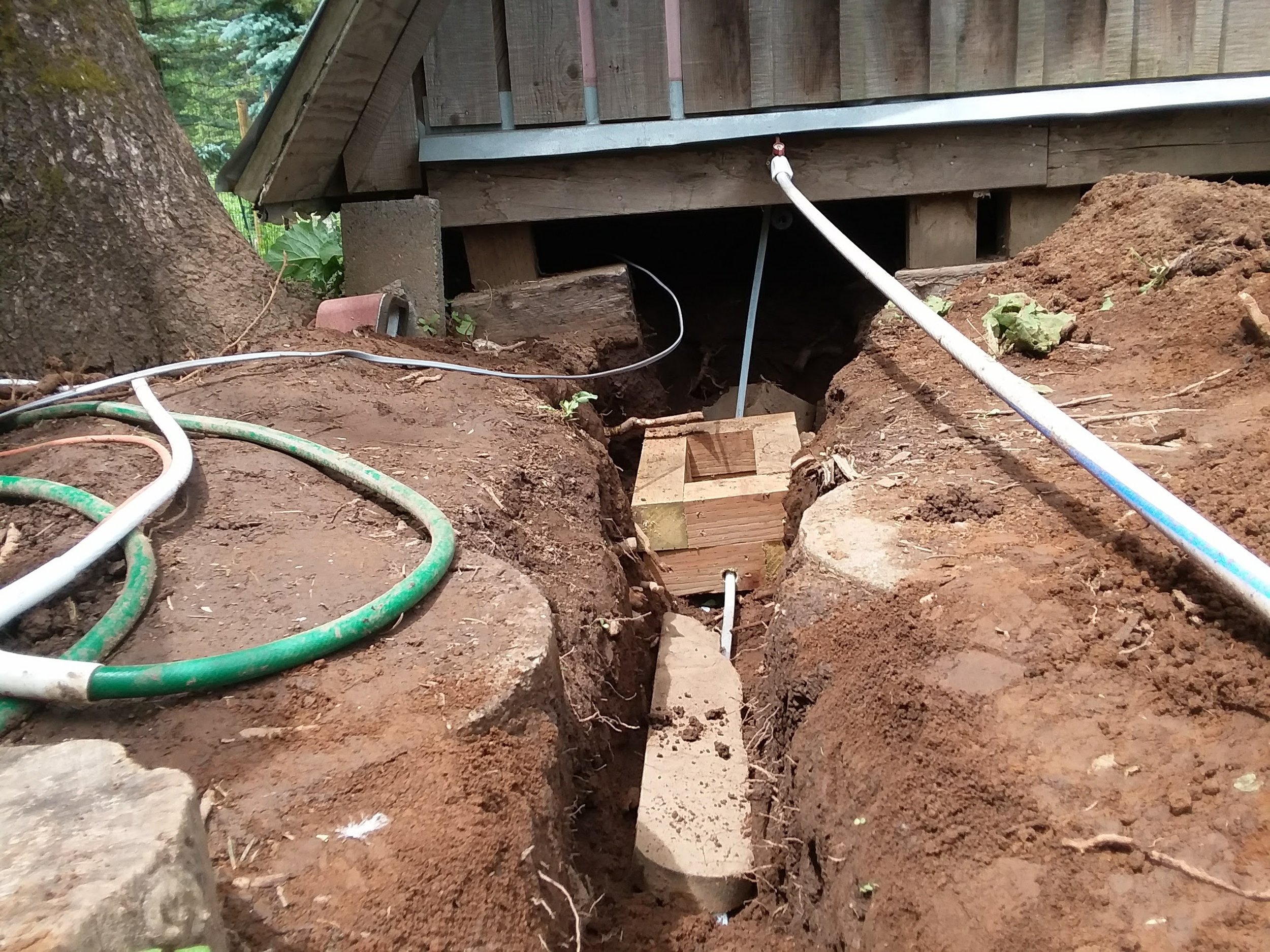


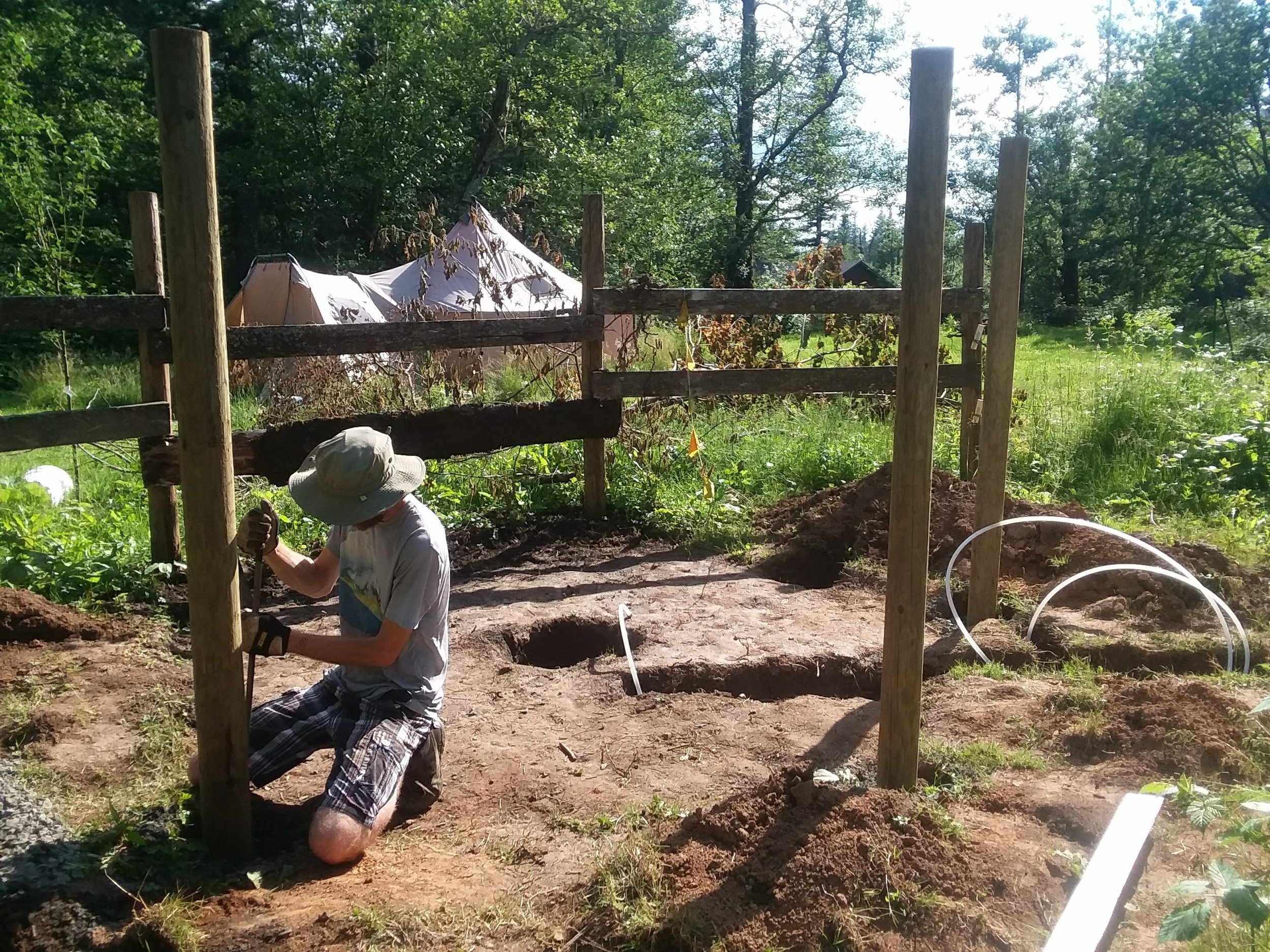
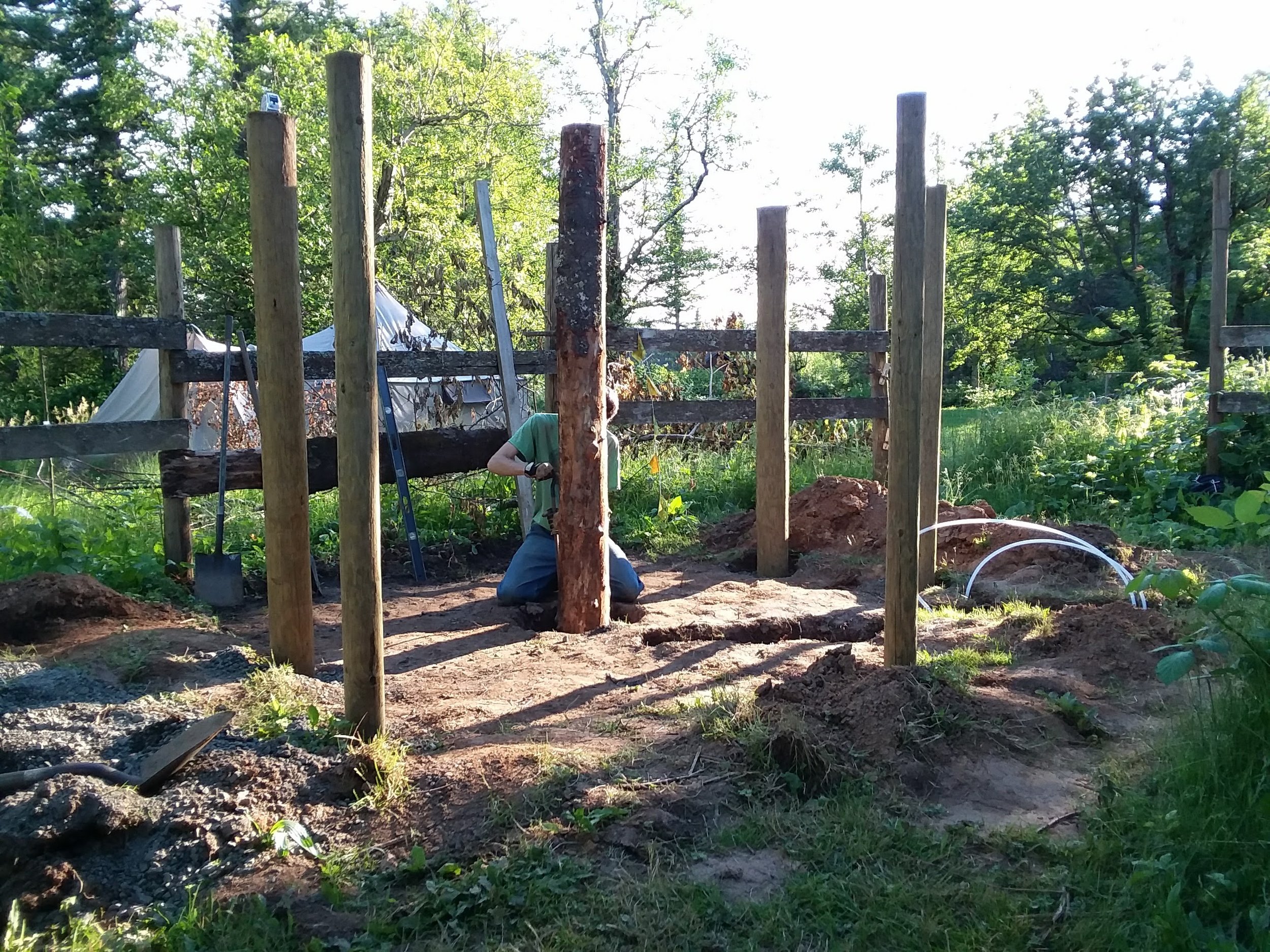
After a month of living a simple, rustic, internet-free life, we have moved on from the Stand Family Farm. We are now staying at Red Truck Homestead, a one-acre urban farm located in the city of Portland, where Mike, the farmer, raises heritage ducks and grows a variety of vegetables for markets and local restaurants. We will tell you more about life on an urban homestead in our next post!






